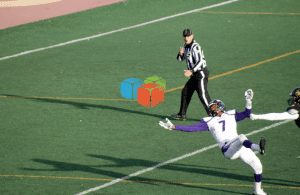
Why do so few product development programs make that connection between the product specification document content and the released product? It seems to be such a common thing that these two don’t connect that organizations don’t even bother to review or analyze this after release.
The mindset at that point seems to be:
- We did the best we could with the resources we had
- All product change from their original specifications
- It transformed into a product that better fits our updated understanding of what could be made to satisfy the market
These are all just comfort statements so the project can be tidily closed out without any hanging questions. Everyone wants to move on to the next program; and we may also  be busy with a few field issues on the new product at the moment as well. So no time to sit back and reflect.
be busy with a few field issues on the new product at the moment as well. So no time to sit back and reflect.
But doesn’t this seem a bit crazy from a farther vantage point?
Why was so much effort put into:
- Studying the product market and customers then defining a product niche
- Studying current technology
- Capability of new technology
- Risk of capital investment & business goals
- Brand alignment and goals
Something became disconnected. No one created all those specifications based on such a large multi-department initiative thinking it wouldn’t direct the development program through to completion. Maybe we should push to have our team, or just those willing to invest a bit of time. Evaluate together how well the product matched the spec and highlight what was off and why. It could create a few realizations that could drive some strong improvement in the next product development cycle.
 This post is a call for some direct discussion. I don’t want to list my observations in the next paragraph. I have seen this process and it’s shortcoming many times. I have created methods that have worked in some cases. But what I would like is to hear back from “you”. Share what you have observed internally and why you believe this type of disconnect has happened in your product development programs. So let’s hear it! What have you seen? What is your analysis on cause and opportunity for doing it better?
This post is a call for some direct discussion. I don’t want to list my observations in the next paragraph. I have seen this process and it’s shortcoming many times. I have created methods that have worked in some cases. But what I would like is to hear back from “you”. Share what you have observed internally and why you believe this type of disconnect has happened in your product development programs. So let’s hear it! What have you seen? What is your analysis on cause and opportunity for doing it better?
Comment on this post or simply contact me directly by email or phone. I am very interested in hearing your story.
abahret@apexridge.com
978 879 8617
Thanks -Adam
 Ask a question or send along a comment.
Please login to view and use the contact form.
Ask a question or send along a comment.
Please login to view and use the contact form.
Leave a Reply